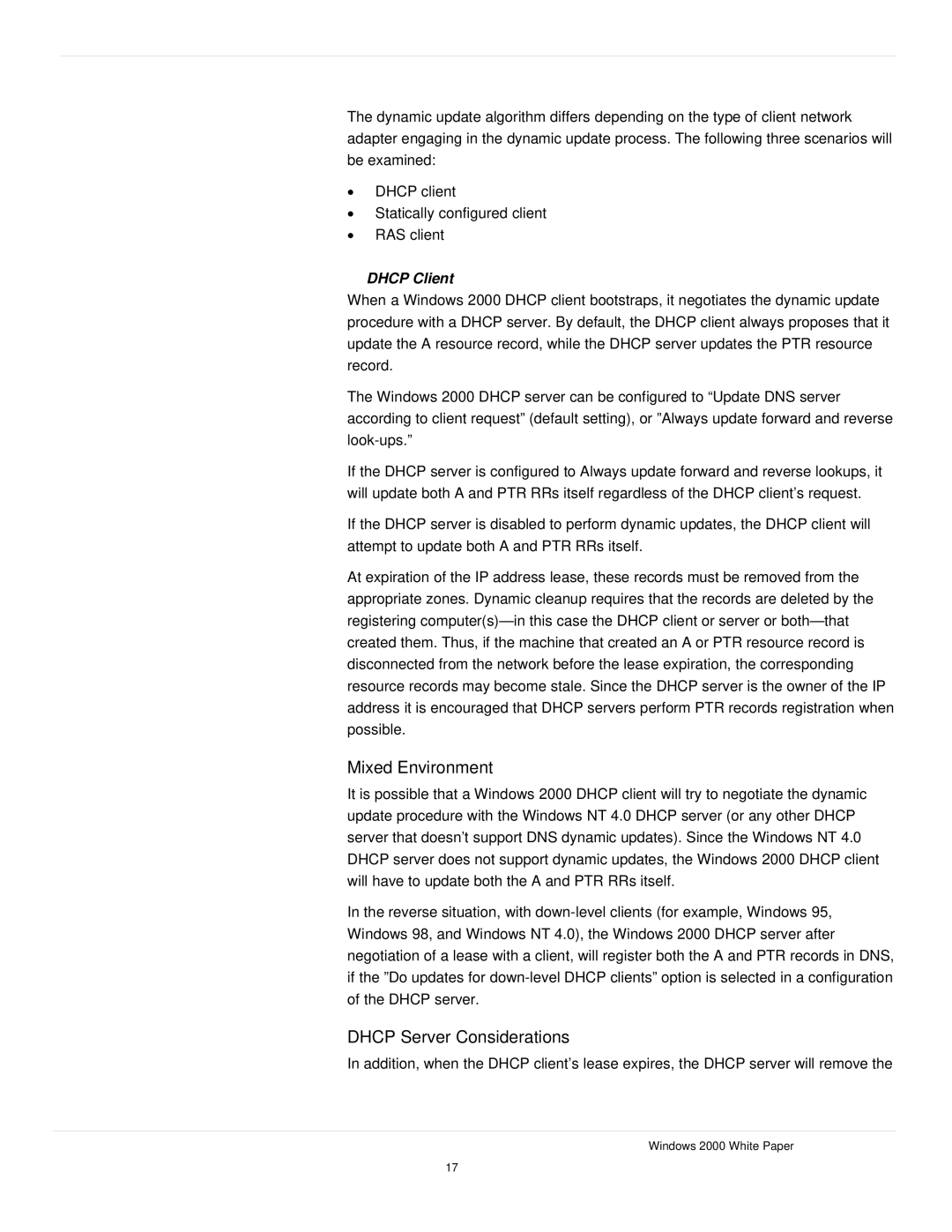
The dynamic update algorithm differs depending on the type of client network adapter engaging in the dynamic update process. The following three scenarios will be examined:
•DHCP client
•Statically configured client
•RAS client
DHCP Client
When a Windows 2000 DHCP client bootstraps, it negotiates the dynamic update procedure with a DHCP server. By default, the DHCP client always proposes that it update the A resource record, while the DHCP server updates the PTR resource record.
The Windows 2000 DHCP server can be configured to “Update DNS server according to client request” (default setting), or ”Always update forward and reverse
If the DHCP server is configured to Always update forward and reverse lookups, it will update both A and PTR RRs itself regardless of the DHCP client’s request.
If the DHCP server is disabled to perform dynamic updates, the DHCP client will attempt to update both A and PTR RRs itself.
At expiration of the IP address lease, these records must be removed from the appropriate zones. Dynamic cleanup requires that the records are deleted by the registering
Mixed Environment
It is possible that a Windows 2000 DHCP client will try to negotiate the dynamic update procedure with the Windows NT 4.0 DHCP server (or any other DHCP server that doesn’t support DNS dynamic updates). Since the Windows NT 4.0 DHCP server does not support dynamic updates, the Windows 2000 DHCP client will have to update both the A and PTR RRs itself.
In the reverse situation, with
DHCP Server Considerations
In addition, when the DHCP client’s lease expires, the DHCP server will remove the
Windows 2000 White Paper
17
